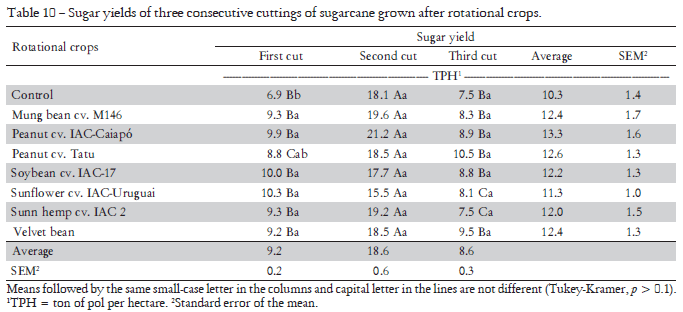Sugarcane (Saccharum spp.) is an important crop for sugar production and agro-energy purposes in Brazil. In the sugarcane production system after a 4- to 8-year cycle crop rotation may be used before replanting sugarcane to improve soil conditions and give an extra income. This study had the objective of characterizing the biomass and the natural colonization of arbuscular mycorrhizal fungi (AMF) of leguminous green manure and sunflower (Helianthus annuus L.) in rotation with sugarcane. Their effect on stalk and sugar yield of sugarcane cv. IAC 87-3396 grown subsequently was also studied. Cane yield was harvested in three subsequent cuttings. Peanut cv. IAC-Caiapó, sunflower cv. IAC-Uruguai and velvet bean (Mucuna aterrimum Piper and Tracy) were the rotational crops that resulted in the greater percentage of AMF. Sunflower was the specie that most extracted nutrients from the soil, followed by peanut cv. IAC-Tatu and mung bean (Vigna radiata L. Wilczek). The colonization with AMF had a positive correlation with sugarcane plant height, at the first cut (p = 0.01 and R = 0.52) but not with the stalk or cane yields. Sunflower was the rotational crop that brought about the greatest yield increase of the subsequent sugarcane crop: 46% increase in stalk yield and 50% in sugar yield compared with the control. Except for both peanut varieties, all rotational crops caused an increase in net income of the cropping system in the average of three sugarcane harvests.
adubo verde; leguminosas; fixação biológica de nitrogênio; produção de colmos de cana-de-açúcar












